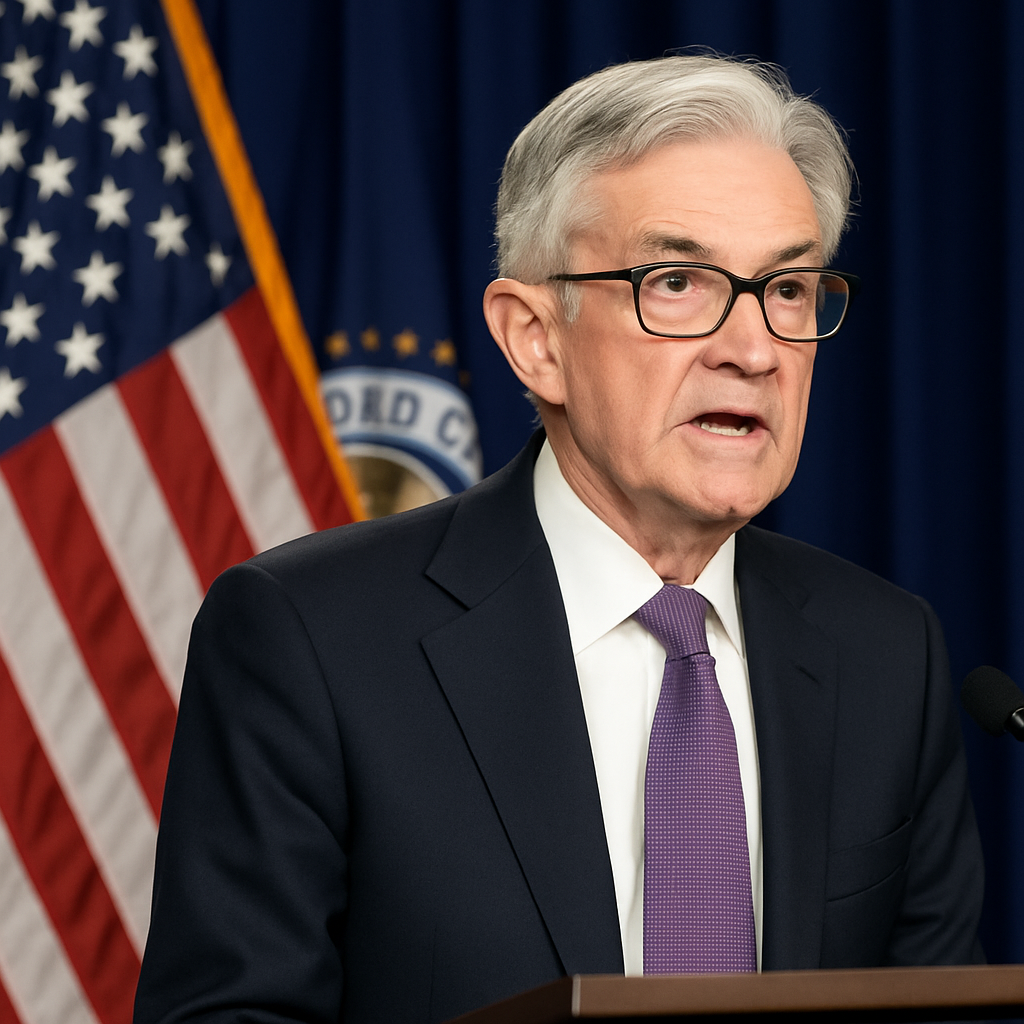Federal Reserve Chair Jerome Powell, speaking at the annual Jackson Hole conference on August 22, 2025, hinted at a possible interest rate cut as early as September. Powell emphasized a cautious approach, noting that the Federal Reserve is balancing concerns over a cooling labor market against persistent inflation risks. “The shifting balance of risks may warrant adjusting our policy stance,” he said, though no final decision has been made.

Powell’s remarks were less definitive than last year’s, but markets interpreted them as dovish. Bank of America economist Aditya Bhave noted, “Fed Chair Powell’s comments at Jackson Hole were more dovish than we and markets were expecting.” Futures markets now fully expect a quarter-point rate cut at the Federal Reserve’s September 16-17 meeting, with some Wall Street analysts forecasting two cuts totaling 50 basis points by year-end. The current federal funds rate stands at 4.25%-4.50%.
Federal Reserve Outlook and Market Reactions
Powell highlighted that the Federal Reserve is closely monitoring employment trends, stating, “The stability of the unemployment rate allows us to proceed carefully.” However, he warned that “downside risks to employment are rising” due to slowing labor supply and demand. The Federal Reserve is particularly concerned about job losses escalating if economic conditions worsen. On inflation, Powell noted that tariffs could temporarily increase prices but cautioned that they “could spur a more lasting inflation dynamic.”
Following Powell’s speech, U.S. stock markets rallied. The Dow Jones Industrial Average climbed 846 points, or 1.89%, to a record close of 45,631.74. The S&P 500 gained 1.52% to 6,466.91, while the NASDAQ Composite rose 1.88% to 21,496.53. Barclays U.S. economist Marc Giannoni interpreted Powell’s comments as signaling an easing bias, with the Federal Reserve prioritizing full employment. Barclays now expects two 25-basis-point rate cuts in 2025, likely in September and December, followed by additional cuts in March and June 2026. By late 2026, Barclays predicts the federal funds rate will stabilize at 3.25%-3.50%.
Giannoni noted, “The contingent of moderate board voters is likely to support Powell’s assessment, which should carry the FOMC vote.” However, he emphasized that the Federal Reserve’s cautious approach makes large “jumbo” cuts unlikely. A strong August jobs report, due September 5, could prompt the Federal Reserve to hold rates steady. Barclays suggests an unemployment rate of 4.0%-4.1% with firm core inflation of at least 0.4% could justify no cut in September. Bank of America’s Aditya Bhave believes an unemployment rate of 4.2% with job growth of 70,000 or more could keep a rate hold in play.
With markets reacting strongly to Federal Reserve signals, investors are reevaluating opportunities. Tools like ProPicks AI from Investing.com offer model portfolios to identify high-potential stocks, including nine overlooked stocks that surged over 25% this year.



